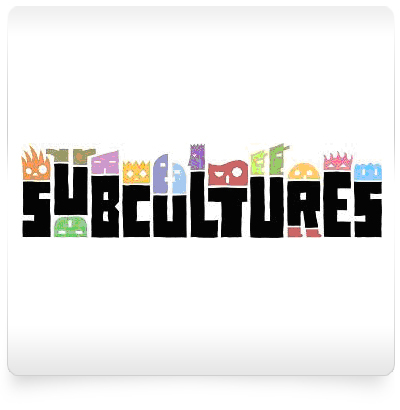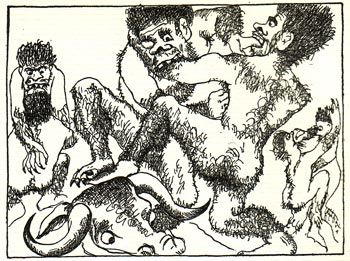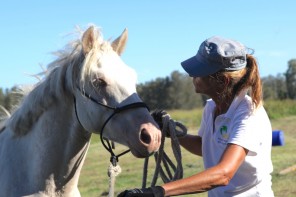Goths, Visgoths, Ostrogoths…Robert Drewe explores the history of goth…
As she’d shown no previous interest in tubby 57-year-old male musicians with teased black hair, eye-liner and smeared lipstick, it surprised me that for her 16th birthday last week my daughter wanted to see The Cure, the darlings of dark music lovers.
However, she attended the concert, enjoying it so much that she later asked those family members who were of Robert Smith’s generation to explain what genre The Cure’s music belonged to. “They’re Goths, aren’t they?”
A spirited discussion followed around the dinner table during which the terms “gothic rock”, “post-punk” and “dark and gloomy” were bandied around, and someone said “and now it’s syrupy pop stuff”.
I Googled Robert Smith, the lead singer, guitarist
and song writer, to see how he describes his music these days, and he said, “It’s so pitiful when “goth” is still tagged onto The Cure. I just play Cure music, whatever that is.” According to him, ”gothic rock is incredibly dull and monotonous. A dirge, really.”
According to Music News in 2006, The Cure’s primary musical traits are “dominant, melodic bass lines; whiny, strangulated vocals; and a lyric obsession with existential, almost literary despair.”
So there we were, vaguely confused and strangely nostalgic for the time (it seemed only yesterday) when Harry Styles from the boy-band One Direction was venerated on the birthday girl’s schoolbag and pencil box.
While noting that Mr Smith is currently worth $3.35 billion — for which amount every elderly male I know would gladly wear mascara and smeared lipstick in public – it got me wondering what “goth” actually meant now. Is it even worth mentioning for older readers that as a youthful sub-culture, goths have never had the slightest connection to the ancient Germanic tribes?
The goth subculture was initially influenced by gothic or eerie fiction, characterised by gloom and darkness, often with a grotesque or supernatural plot. Though endlessly fascinated with death, it seems to be the subculture that never dies. Goths have been putting on dark eyeliner, black hair dye and pale face, and influencing fashion and music, for the last 40 years.
However, the original Goths, according to the 6th Century historian Procopius, were “tall, fair-haired and handsome to look upon.” They were famed for their beautiful jewellery and architecture. Warriors of powerful build, the Goths (Visigoths in the west, Ostrogoths in the east) contributed to the almost complete Germanization of the Roman Army in the 4th century. Despite being denounced by toga-wearing conservatives, the gothic penchant for animal skins even became the fashion.
Modern goths, I learned, are nowadays fragmenting into many sub-sub-cultures, including emos (emotional, overwrought goths), cyber goths (IT goths), corp goths (smart casual goths), steampunk goths (sci-fi goths) and mopey goths (goths who are even more depressed than emos).
In an increasingly gothic mood myself (characterised by gloom and darkness rather than by soldiering and jewellery) my research segued into other realms where current subculture terminology is often at loggerheads with the behavior or style of the original characters.
Vandals, for example, weren’t known for their graffiti or damage to train seats and public toilets. An East German tribe, they’re regarded by modern historians as perpetuators, not destroyers, as was once thought, of Roman Culture.
“Hoon”, the common Australian term for someone, invariably young and male, engaging in loutish behavior, especially driving a car or motor boat too fast, too noisily or too dangerously, is believed to have its origins in Gulliver’s Travels.
Linguist Sid Baker in his book The Australian Language suggested that “hoon” was a contraction of Houyhnhnm, a fictional race of intelligent horses which appears in Jonathan Swift’s 1726 novel.
“Yob”, meaning a loutish uncultured person, is a product of back-slang, whereby new words are created by spelling or pronouncing existing words backwards. “Yob”, derived from the word “boy”, only acquired a derogatory connotation in the 1930s.
It’s interesting how many words there are for louts, and how far back they go. The word “yahoo” was also coined by Swift in Gulliver’s Travels, referring to a race of foul, brutish creatures in the form of men. The term evolved to refer to a coarse, unruly, crudely materialistic person, and an American multinational technology company.
Surprisingly, Jonathan Swift, had no hand in naming our bodgies or widgies. According to the Sydney Morning Herald the first bodgies were former World War 2 Australian seamen, whose first gang, the Woolloomooloo Yanks, congregated in Kings Cross milk bars in 1948.
The Age suggested the term “bodgie” arose when rationing caused a flourishing black market in American-made cloth. “People tried to pass off inferior cloth as American-made: so it was called “bodgie”. When young guys started talking with American accents to big-note themselves they were called bodgies.”
Sounds dodgy to me.
Robert Drewe’s latest book, The Beach, an Australian Passion, is published by the National Library of Australia and is available here: the-beach-an-australian-passion
His other recent books The Local Wildlife and Swimming to the Moon are on sale here: penguin.com.au







